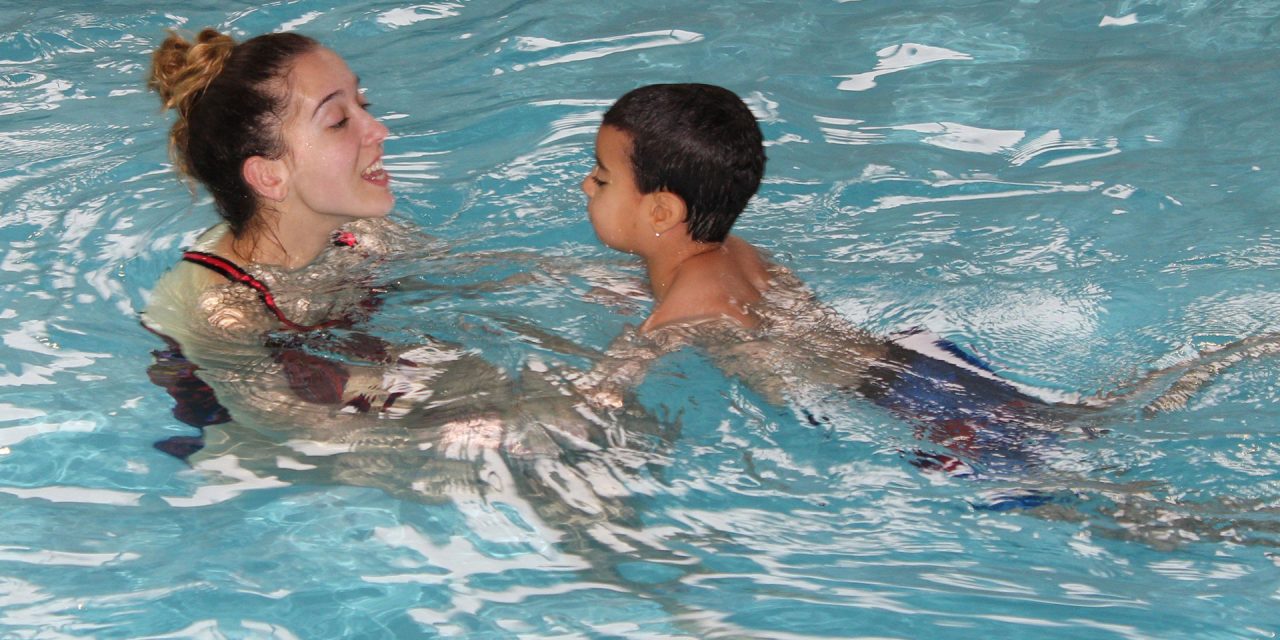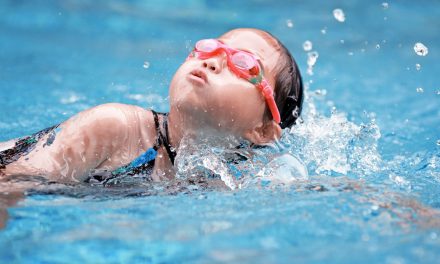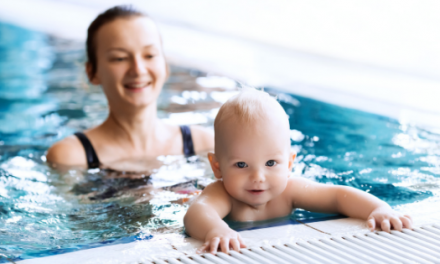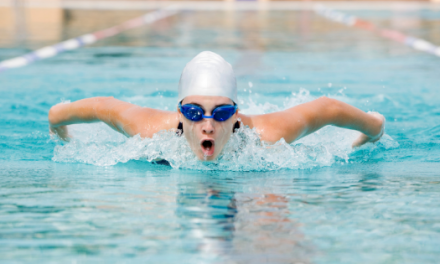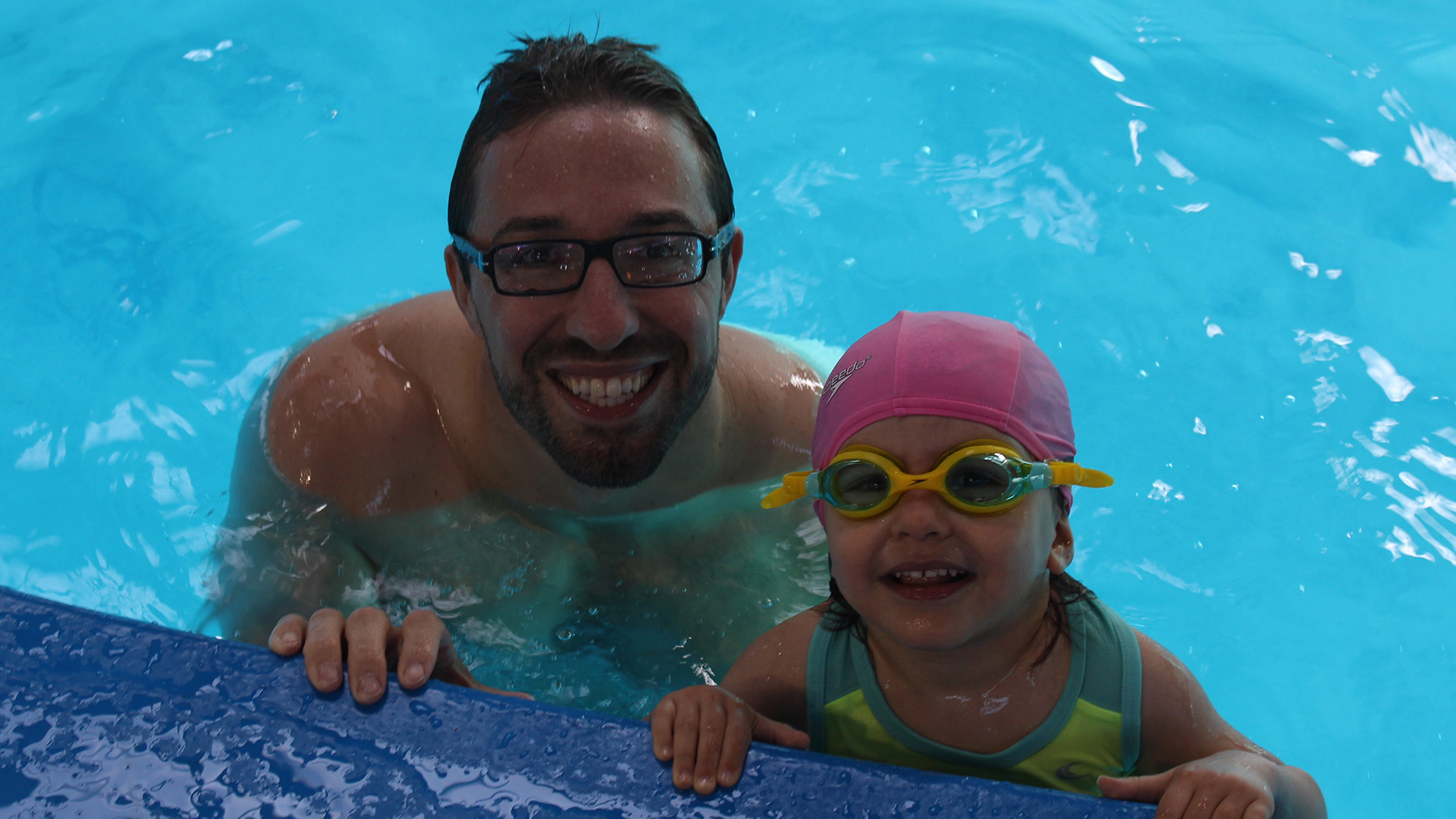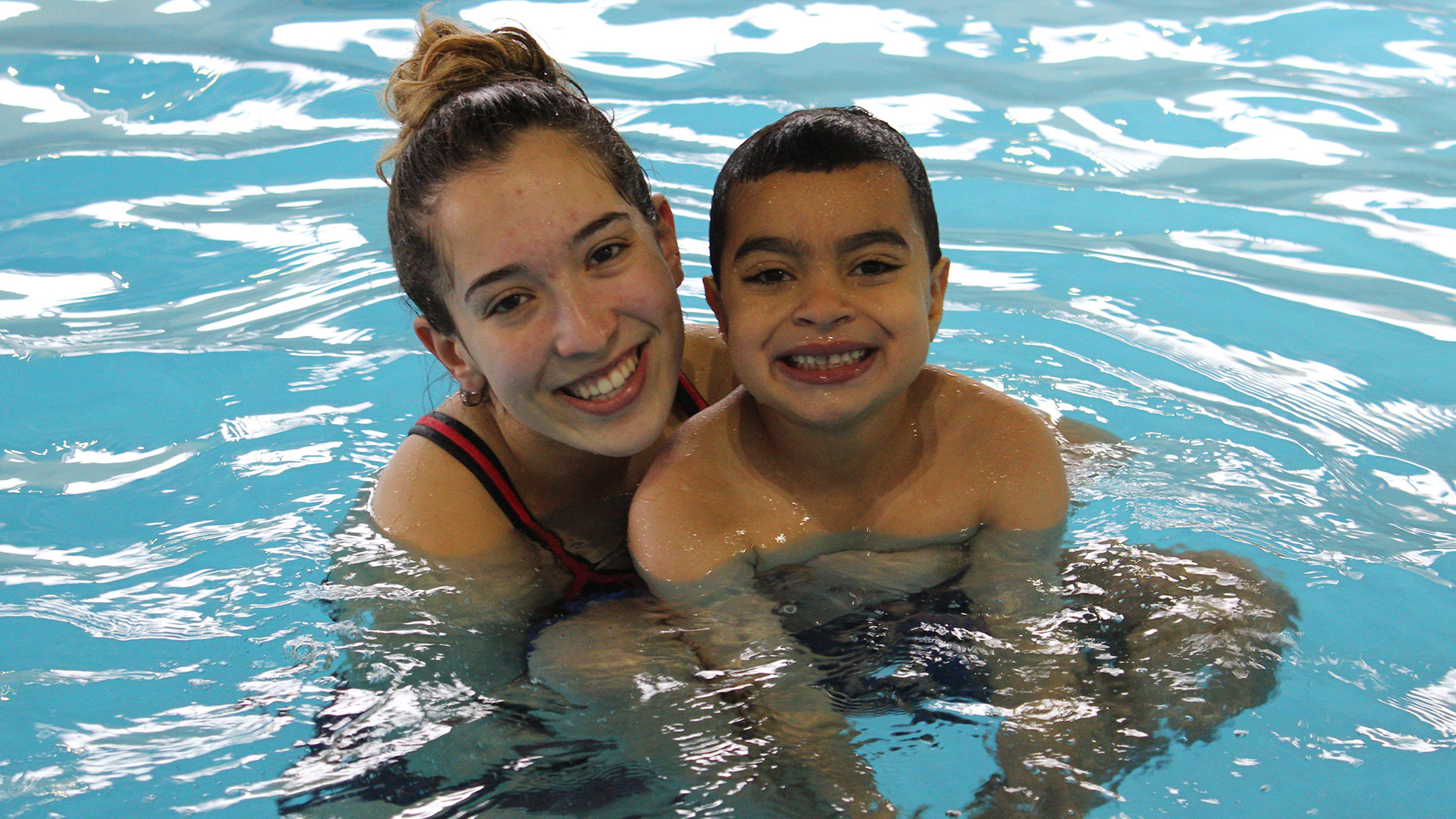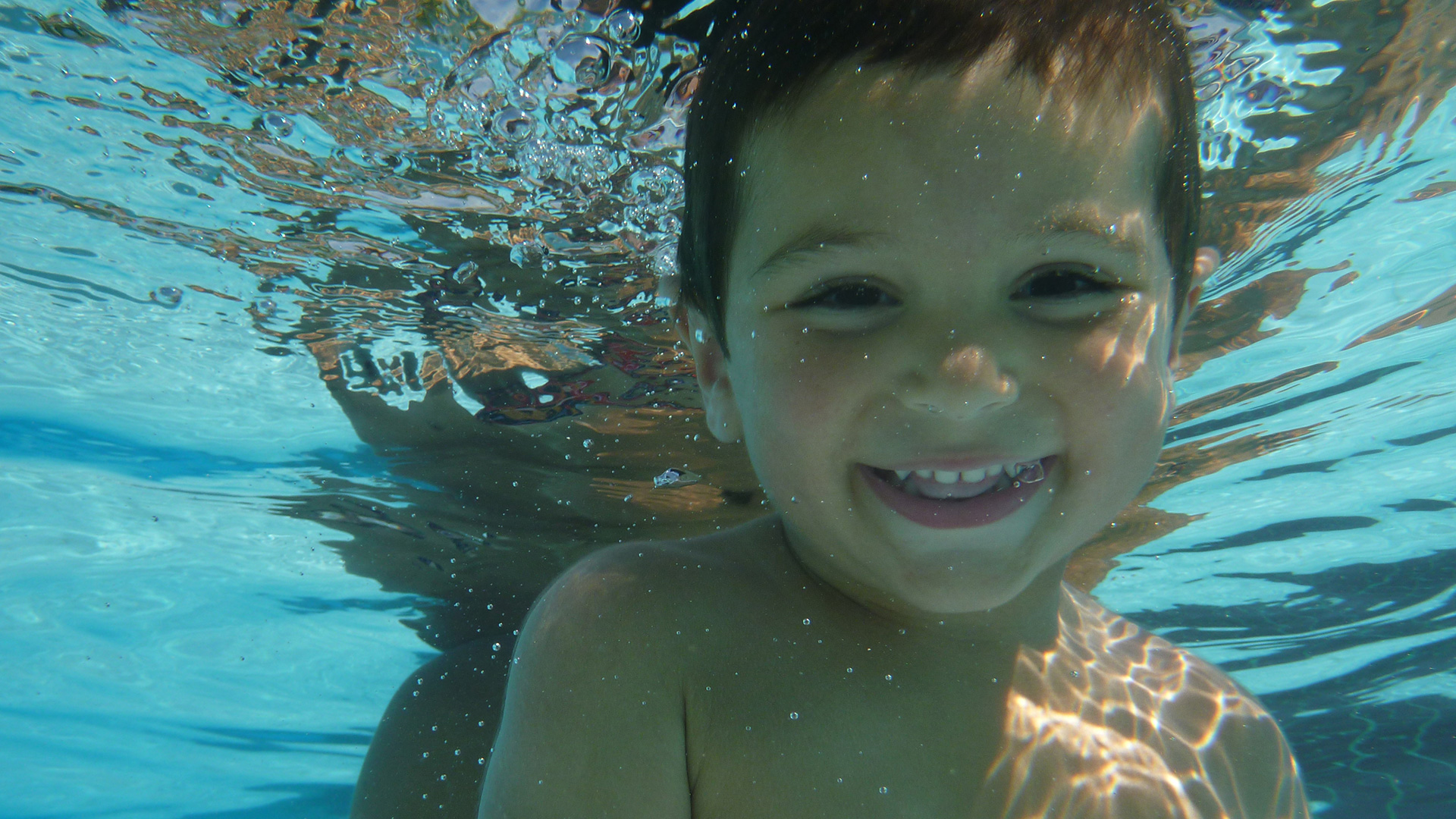Swimming lessons is about more than just survival. It’s about learning the sport of swimming!
What kids can learn at a young age is incredible and they can do more than we think!
The number one concern every parent has when it comes to swimming is SAFETY. All any parent wants when they sign their kids up for swimming lessons is to make sure that they will survive in the water on their own. Although this is the most immediate goal you should strive to accomplish with your child, there is a world of skills to be learned in the SPORT of swimming once your child has the survival part mastered.
Swimmers as young as 5 years old are eligible to participate in competitive swimming. This means that by 5, swimmers should have knowledge of the 4 strokes of swimming and should be able to cover the distance of a 25m pool. It sounds challenging, but the truth is that every kid is capable of accomplishing these skills at this age.
Many swimming lesson programs do not have a strong focus on the 4 strokes of swimming and those who do only introduce the most complicated skills when kids are much older (aged 7-10).
Introducing the 4 Strokes
The first thing kids should be aware of once they can survive in the pool is that there are 4 strokes in swimming: Front Crawl, Back Crawl, Breaststroke and Butterfly.
Most instructors avoid teaching strokes like breaststroke and butterfly because they are more complicated. The most effective way to create well rounded swimmers at a young age, however, is to introduce all 4 strokes at the same time and work on them all consistently throughout the season. By the age of 5, kids should be expected to complete every stroke on their own – with or without the aid of an instructor.
Swimming is one of the best sports your kids can participate in. Make sure your swimming lessons are about more than just survival. Make them about learning the sport of swimming, so they can LOVE swimming and enjoy it for LIFE!
Stroke 1: Front Crawl
 Introducing kids aged 3-5 years old to the “Front Crawl” is done by first introducing the arm movements (big circles with straight arms).
Introducing kids aged 3-5 years old to the “Front Crawl” is done by first introducing the arm movements (big circles with straight arms).
We can also introduce “Streamline off the Wall.” Once kids can effectively perform their streamline off the wall and 3-5 arm circles, we can then begin practicing skills like breathing to the side correctly and have the swimmer cross the entire pool in front crawl.
Stroke 2: Backstroke
 Learning the “Backstroke” technique is very similar to the front crawl. The most effective way to teach backstroke is to first have the swimmer perfect their streamline on their back. Once swimmers can accomplish 1 lap of the pool in streamline, we can easily add the arm movements without the swimmer having too much difficulty supporting themselves while swimming.
Learning the “Backstroke” technique is very similar to the front crawl. The most effective way to teach backstroke is to first have the swimmer perfect their streamline on their back. Once swimmers can accomplish 1 lap of the pool in streamline, we can easily add the arm movements without the swimmer having too much difficulty supporting themselves while swimming.
The arm movements for back stroke are quite specific. With arms straight at all times, the thumb exits the water first and the pinky finger enters the water first allowing for a maximum reach throughout the stroke. The main benefit of the backstroke is that it allows for continuous breathing throughout.
Stroke 3: Breaststroke
 The most effective way to teach this complicated stroke is to break it down into small, easy to learn, techniques and then piece it back together. Most instructors start by teaching the “Breaststroke Kick. We can learn the kick quickly by having the swimmer hold the flutter board in front of them with their head above the water while the teacher is manipulating their feet.
The most effective way to teach this complicated stroke is to break it down into small, easy to learn, techniques and then piece it back together. Most instructors start by teaching the “Breaststroke Kick. We can learn the kick quickly by having the swimmer hold the flutter board in front of them with their head above the water while the teacher is manipulating their feet.
Having the swimmer bend both of their legs at the same time and jumping off the hands of the instructor is the quickest and easiest way to develop the muscle memory involved in the breaststroke kick.
Once the swimmer understands this jumping movement, they should put their face in the water, hold the flutter board in front of them and attempt doing 3 kicks with their face in the water. Once the swimmer can effectively move through the water using the breaststroke kick, they can easily learn the breathing and the arm movements involved.
Stroke 4: Butterfly
 The “Butterfly” is also regarded as a difficult stroke to learn and should also be taught in small, easy to learn, steps. Instructors should start by introducing the wave like/ dolphin like motion that is required for the butterfly. This can be taught in a game where an instructor holds the hands of the swimmer while the swimmer keeps their body relaxed while their face is in the water. The instructor proceeds to “wiggle” the swimmer up and down in the water!
The “Butterfly” is also regarded as a difficult stroke to learn and should also be taught in small, easy to learn, steps. Instructors should start by introducing the wave like/ dolphin like motion that is required for the butterfly. This can be taught in a game where an instructor holds the hands of the swimmer while the swimmer keeps their body relaxed while their face is in the water. The instructor proceeds to “wiggle” the swimmer up and down in the water!
This wiggling is a fun and simple way to teach the wave motion of the butterfly. The wave motion is not the kick however. To properly learn the butterfly kick, swimmers need to keep their legs together and learn to kick down with both feet at the same time and then stick their bum up in the air. This movement combined with the wave motion makes for an excellent butterfly kick. Butterfly arms should be taught without the kick when it is first being introduced. Swimmers should start with their arms straight in front of them and their hands in line with their shoulders. With straight arms throughout, swimmers should pull their arms down to the sides of their bodies until their arms are behind them and their palms are facing the ceiling.
Once in this position, swimmers must get both arms completely out of the water and back to the starting position. If kids can do 3 strokes like this while their face is in the water, they will have successfully mastered the basics of the butterfly and can begin to incorporate both the arms and legs together.
The skills described in this article are specifically for introducing the 4 strokes of swimming and not for perfecting technique. These skills can be taught to people of all ages when first learning the fundamentals of each stroke. See you at the pool!
LIVE.LOVE.SWIM.


